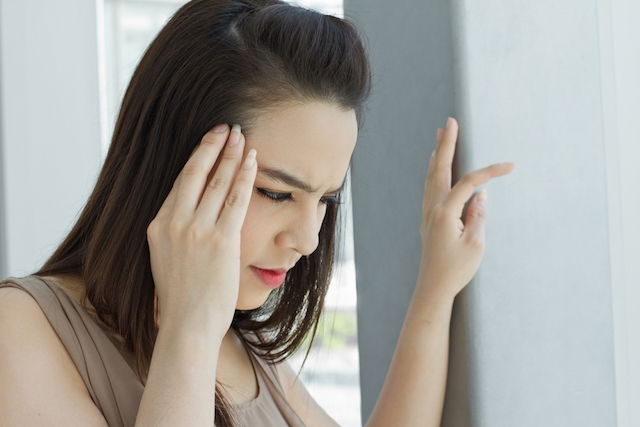Low blood pressure can cause symptoms like weakness, fatigue, dizziness and fainting. It is generally not a problem, especially in patients who have a low blood pressure on average, however quick falls in blood pressure can lead to symptoms.
To raise blood pressure at home, you should:
- Lie down, preferably in a cool and well-ventilated room.
- Remove or loosen clothing, especially around the neck
- Lift the legs above heart level, about 45º from the floor
- Drink fluids, like water, coffee or fruit juice, once you feel stable
Lifting the legs allows for blood to flow toward the heart and brain more easily, which increases blood pressure. You should remain in this position for a few symptoms, until symptoms improve. Learn more about the symptoms of low blood pressure so that you can recognize them immediately.

How to prevent drops in blood pressure
To prevent significant decreases in blood pressure, consider the following measures:
- Take blood pressure medication correctly, as prescribed by a doctor and never above the recommended dose. (Read more about the different types of blood pressure medication your doctor may prescribe).
- Avoid very hot and closed environments, and be sure to wear light clothing that is easy to remove
- Drink 1 to 2 liters of water per day, unless your doctor has advised other daily quantities
- Eat light meals every 2 to 3 hours, and be sure to eat breakfast for leaving your house
- Avoid exercising on an empty stomach, and drink at least a smoothie before working out
- Exercise regularly to strengthen your arm and leg muscles, as this thill will promote adequate blood circulation to the heart and brain
Normally, low blood pressure is benign finding and does not cause any serious consequences. However, you may be at risk for fainting and injuring yourself from the fall. Therefore, if you frequently experience drops in blood pressure, or if you notice symptoms like recurring palpitations, you should see a doctor for assessment.
When to see a doctor
Some symptoms of low blood pressure include confusion, pallid skin, rapid breathing, high heart rate or loss of consciousness.
Healthy people with a normally low blood pressure generally do not experience symptoms. However, very rapid decreases can happen as a results of a medication side effect or of a health condition, like dehydration, allergic reaction, blood loss or heart problem.
